
The 1989 Pink Floyd concert in Venice on a floating stage next to San Marco’s Square gathered over 200,000 fans in the crowd and unintentionally resulted in the mayor and the entire city council resigning in the aftermath of their performance.
The city authorities had arranged for a free concert to take place in Venice’s historic Piazza San Marco which would be shown on television in more than 12 countries. The council justified it by saying that Venice “must be open to new trends, including rock music”.
The news was met with excitement by many but also with anger by many Venetians. Many older Venetians wanted to ban the concert. They felt that it would be a logistical nightmare that would potentially destroy the ancient facades and monuments.
Also, it would be eroding the cultural integrity of the event that was planned just around the same time as the concert, the Redenetore (The Redeemer Festival).
“Historic centers should not be used for performances that are incompatible with their historic nature,” Augusto Salvadori, a former Venice commissioner for tourism, told the New York Times. “If they want rock, let them do it in a football stadium, but not in the Piazza San Marco.”
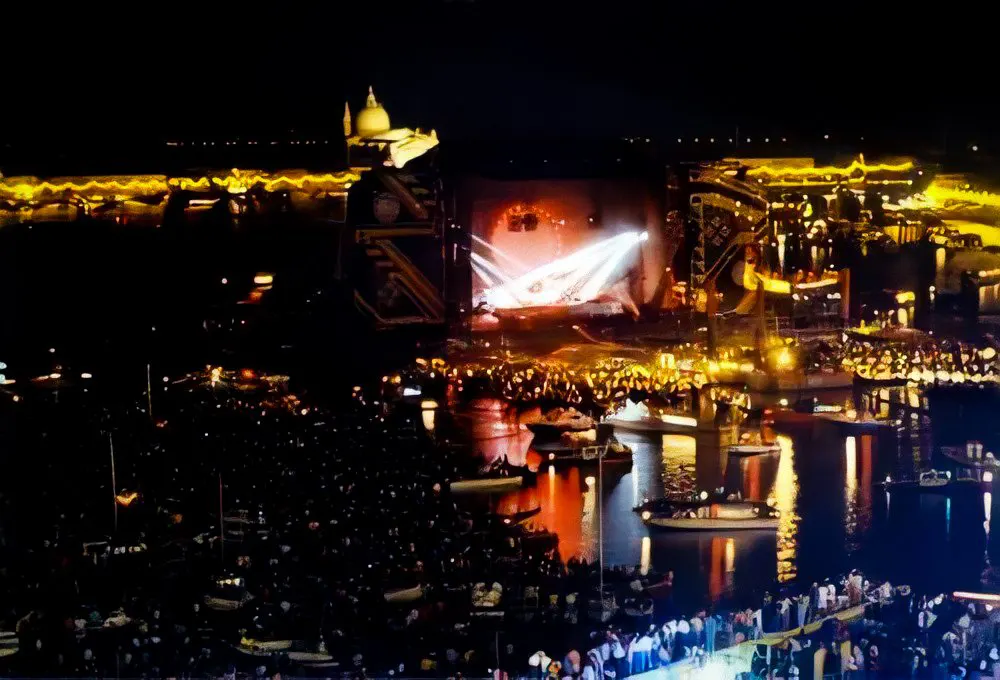
The city’s superintendent for cultural heritage “vetoed the concert” three days before its July 15 date, “on the grounds that the amplified sound would damage the mosaics of St. Mark’s Basilica, while the whole piazza could very well sink under the weight of so many people.”
An accord was finally reached when the band offered to lower the decibel levels from 100 to 60 and perform on a floating stage 200 yards from the square, which would join “a long history… of floating ephemeral architectures” on the canals and lagoons of Venice.
Filmed by state-run television RAI, the spectacle was broadcast “in over 20 countries with an estimated audience of almost 100 million.” Due to time restrictions of live TV, some songs were left out and others shortened in places.
Around the stage, you could see many traditional Venetian boats, classic Venetian rowing boats like the sandalo and other classic boats like the Sanpierotta.
San Marco square was loaded to full capacity. Many in attendance have said it was one of the greatest concerts they ever experienced.
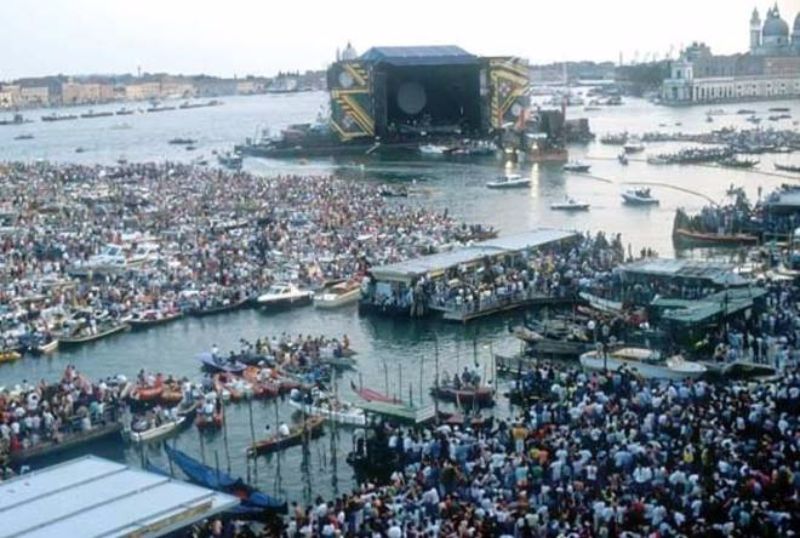
The audience actually ended up doing the most damage. Officials said that they left behind 300 tons of garbage and 500 cubic meters of empty cans and bottles. And because the city didn’t provide portable bathrooms, concertgoers relieved themselves on the monuments and walls.
Enraged afterward, residents shouted down the Mayor Antonio Casellati, who attempted a public rapprochement two days later, with cries of “resign, resign, you’ve turned Venice into a toilet.” Casellati did so, along with the entire city council who had brought him to power.
According to David Gilmour: “The Venice show was great fun, but it was very tense and nerve-wracking. We had a specific length of show to do; the satellite broadcasting meant we had to get it absolutely precise.
We had the list of songs, and we’d shortened them, which we’d never done before. I had a big clock with a red digital read-out on the floor in front of me, and had the start time of each number on a piece of paper. If we were coming near the start time of the next number, I just had to wrap up the one we were on.
We had a really good time, but the city authorities who had agreed to provide the services of security, toilets, food, completely reneged on everything they were supposed to do, and then tried to blame all the subsequent problems on us.”
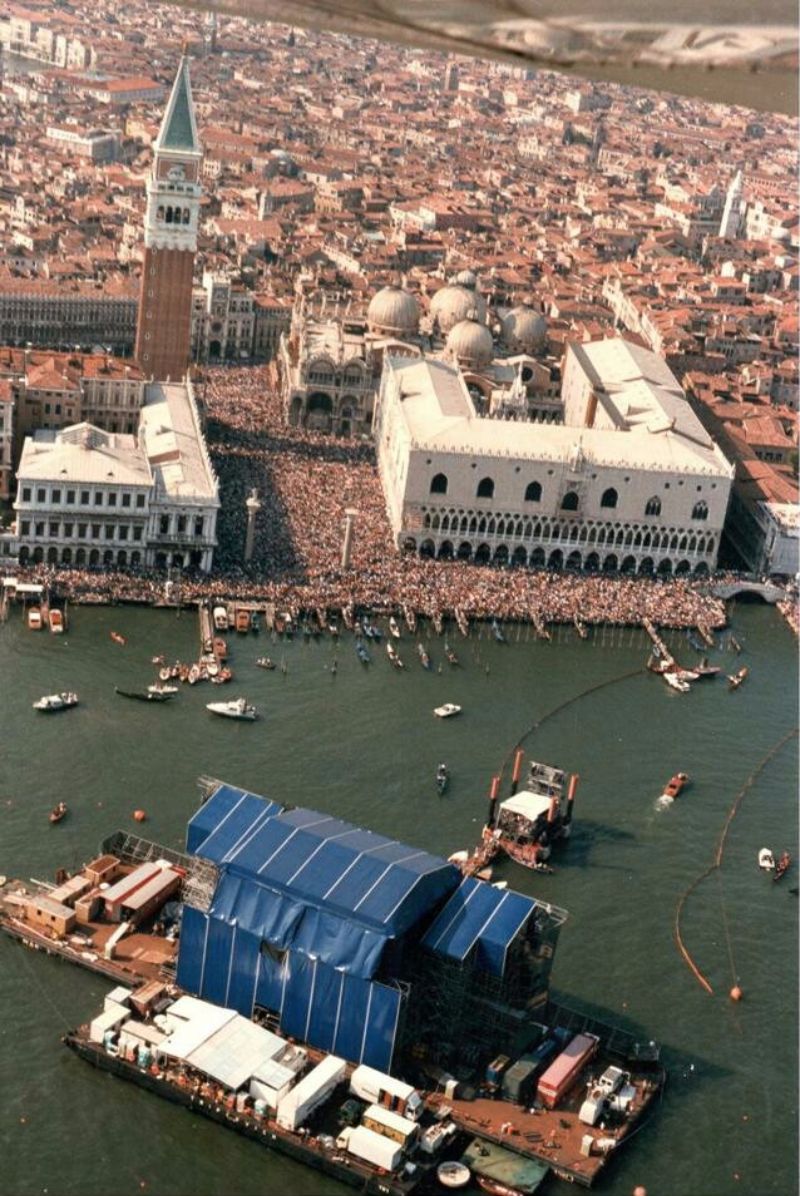
In the end, the band may have taken down the city’s government, but they put on an amazing show–one the Italian fans, and the millions who watched from home, will never forget.


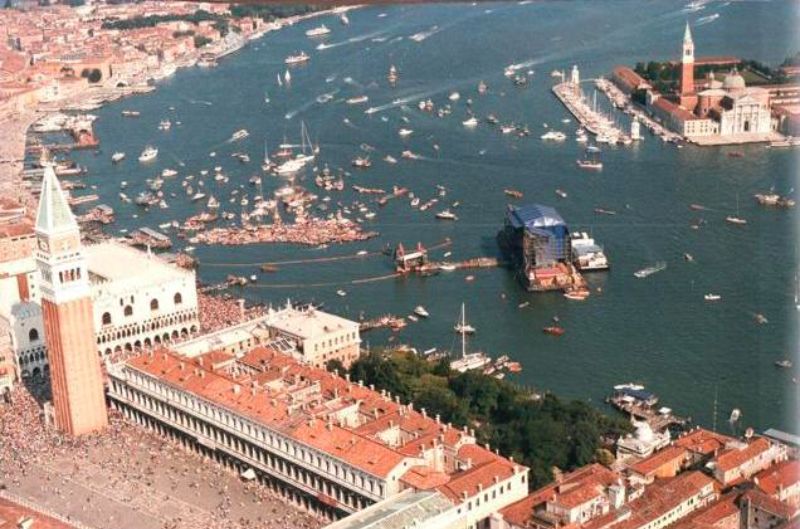







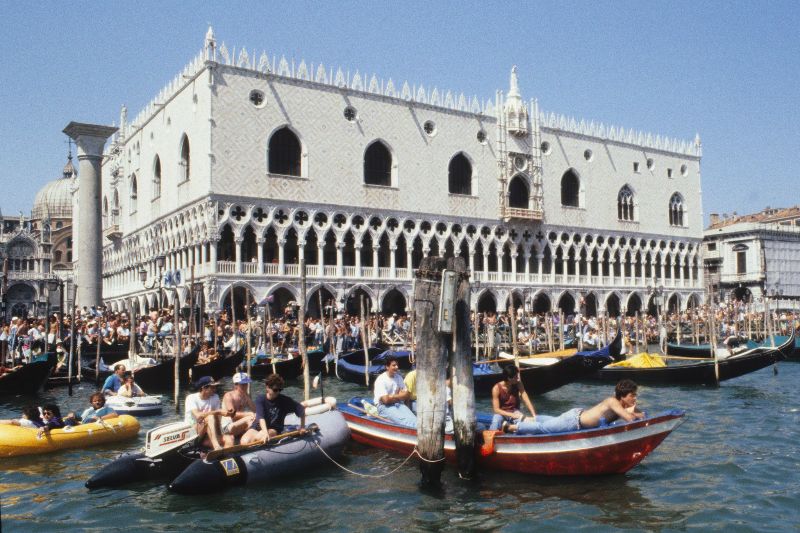
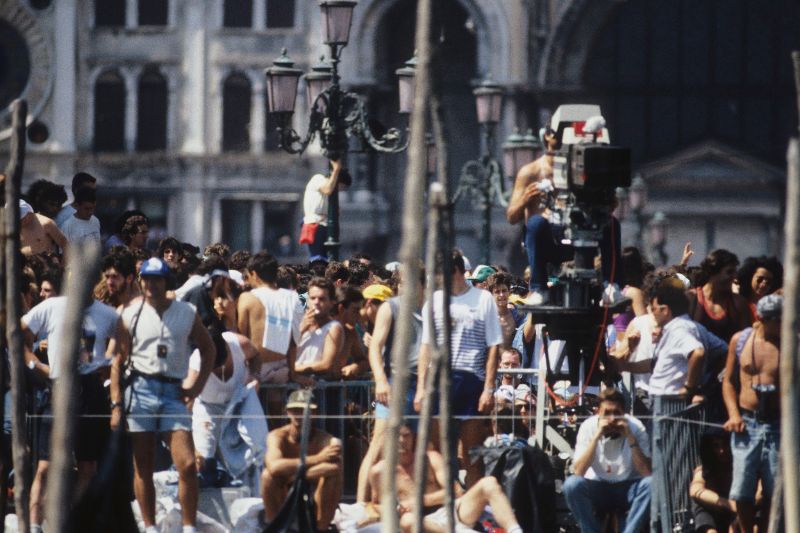


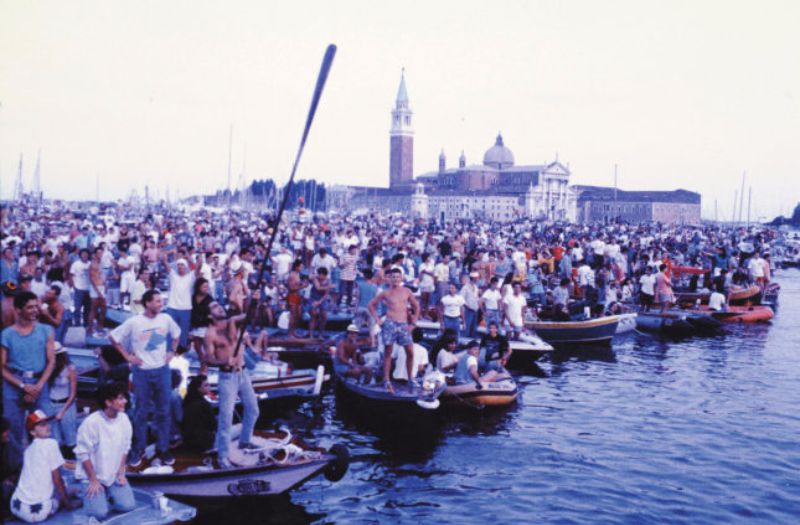
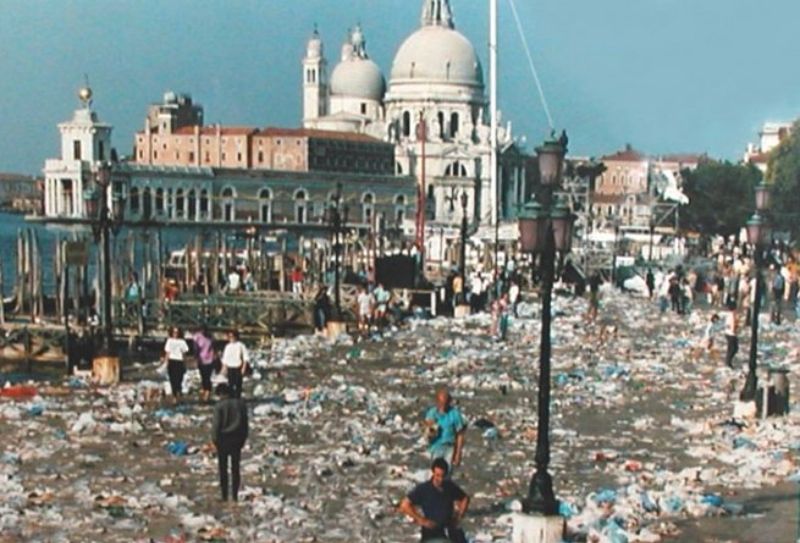


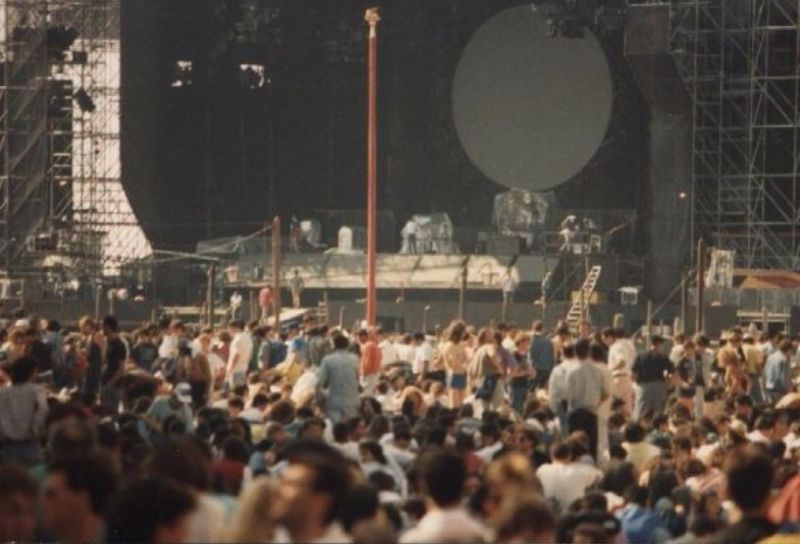
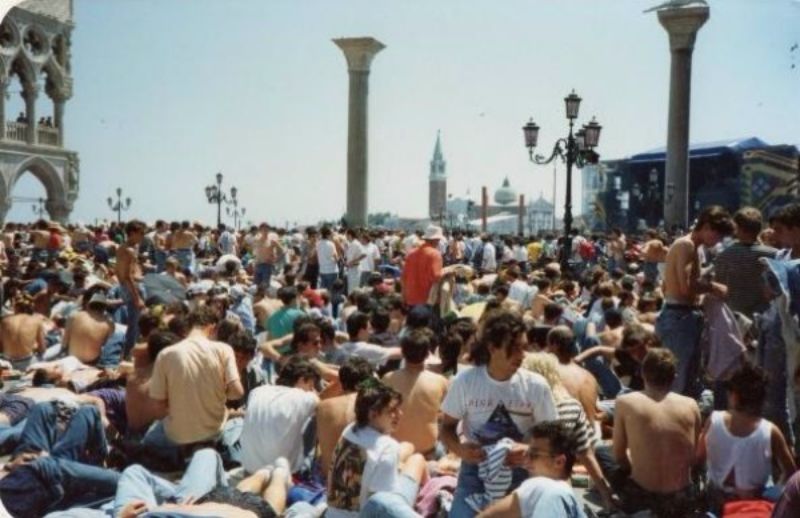


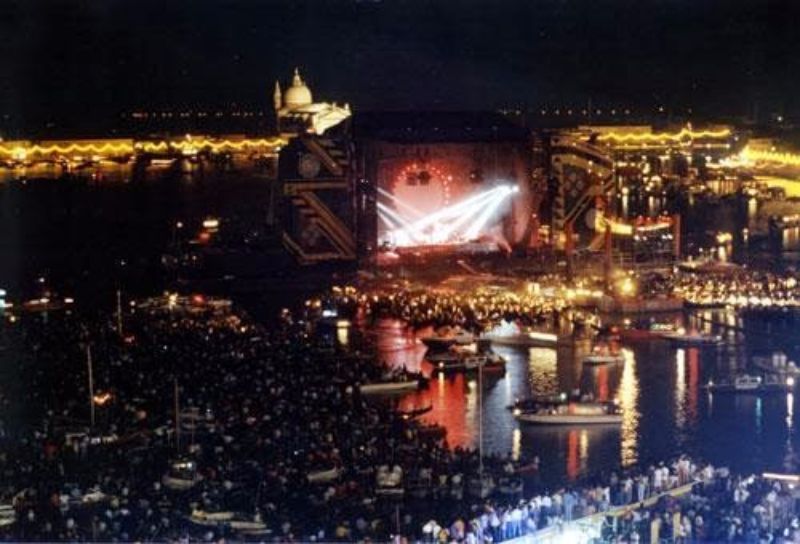


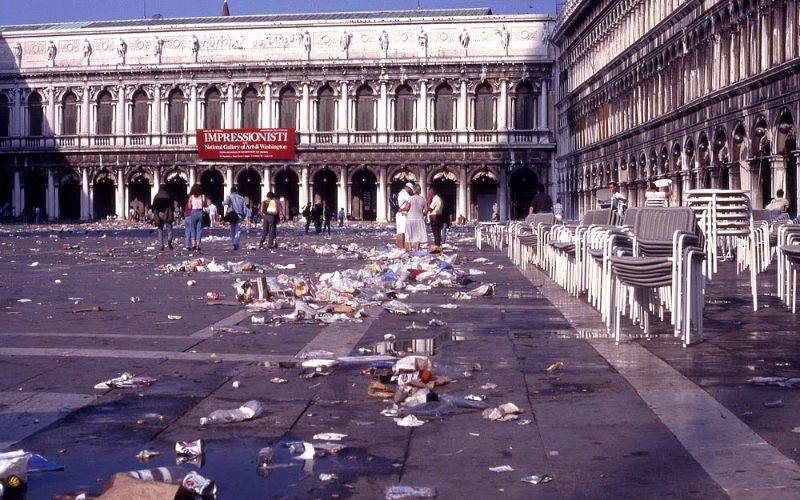


(Photo credit: Open Culture / Wikimedia Commons / Classic Boats Venice / ultimateclassicrock.com / Pinterest).
Updated on: May 31, 2022



